Ultimate Guide to the Weight Leg Press Machine
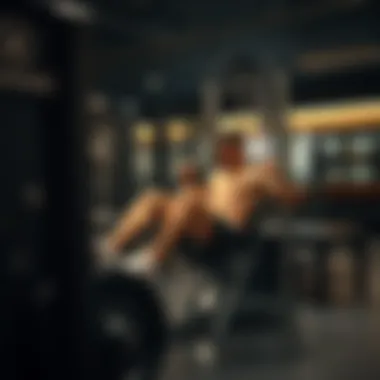
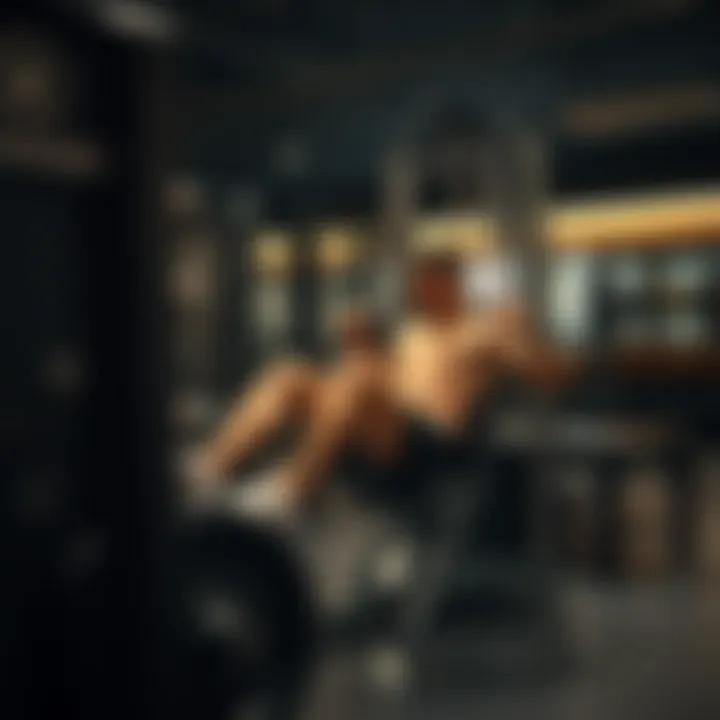
Intro
The weight leg press machine often finds itself as a staple in gyms, allowing individuals from various fitness backgrounds to target their lower body strength. With its distinctive design, the leg press machine facilitates a unique range of motion that is hard to replicate with free weights. As exercise enthusiasts and professionals alike delve into the nuances of strength training, understanding the implications of integrating this machine into workout routines becomes ever more crucial.
As this article unfolds, we will discuss several key aspects. First, we will explore the functional design and biomechanics behind the weight leg press, drawing insights on how it operates differently compared to other leg exercises. Furthermore, we will highlight the substantial benefits it offers, not solely for seasoned athletes, but also for those just beginning their fitness journey. Careful attention will be given to the common pitfalls users may encounter, ensuring safe and effective use of the machine.
This guide aims to empower both health professionals, like fitness trainers and wellness coaches, as well as novices to optimize their workouts. By the conclusion, you will find a wealth of practical information designed to enhance your approach, whether you're setting new fitness goals or amping up an existing regimen. Let's delve in, shall we?
Foreword to the Weight Leg Press Machine
The weight leg press machine is a staple in many gyms, standing out as a fundamental tool for anyone—from fitness novices to seasoned athletes—who aims to strengthen their lower body effectively. Its importance cannot be overstated; the machine offers a controlled environment for targeting major muscle groups in the legs, such as the quadriceps, hamstrings, and glutes, while minimizing the risk of injury when used correctly.
Understanding the leg press machine is crucial for those looking to enhance their training routines. With various designs available, the functional mechanics of each type provide unique benefits. Furthermore, the machine accommodates individuals with different fitness levels. It facilitates adjustments in resistance and body positioning, allowing users to maintain proper form, which is vital in reducing the likelihood of injury during workouts.
The following section delves into what exactly constitutes a weight leg press machine, paving the way for a deeper understanding of its application and value in fitness routines. The insights gathered here are not merely for academic interest but serve practical purposes, assisting fitness trainers, wellness coaches, and health professionals in their advice to clients.
What is a Weight Leg Press Machine?
A weight leg press machine is primarily designed to exercise the lower body. It employs a push-and-pull mechanism to lift weights through leg movements. Users typically sit on a padded seat with their feet placed on a platform. When they push the platform away, they engage the large muscle groups in their legs.
The machine functions through a sliding carriage, where different angles and foot placements can be utilized to vary the workout intensity. Leg presses can be done horizontally, at a 45-degree angle, or in a seated position, offering diverse training options to meet individual needs. This flexibility makes it a favored choice in strength training regimens.
History and Evolution of the Leg Press
The leg press machine has a rich history, typically linked to the advancement of resistance training equipment. Its origin traces back to the early 20th century when athletes sought methods to enhance strength without risking injuries typically associated with free weights.
Initially, these machines were quite rudimentary—often resembling simple sleds. Over the decades, they have evolved into ergonomic designs that allow for precise angle adjustments and better biomechanical support. The introduction of varied resistance mechanisms, like pneumatic or hydraulic systems, added complexity and effectiveness, catering to a wider range of users.
"In fitness, innovation often comes from understanding what the body needs and how to meet that with the right tools."
Today, the leg press machine stands as a testament to advancements in fitness technology. Its development reflects a shift toward safer training practices while maximizing efficiency—proving invaluable for strength training protocols. Acknowledging this evolution provides context for the machine's role today, illustrating how it continues to adapt to modern fitness trends.
How the Weight Leg Press Machine Works
Understanding how the weight leg press machine functions is crucial for maximizing its benefits while minimizing potential risks. This machine is designed with a mechanical advantage that effectively engages the muscles of the lower body, particularly the quadriceps, hamstrings, and glutes. By isolating these muscle groups, the leg press allows for focused strength training, which can lead to notable improvements in muscle hypertrophy, endurance, and overall strength.
Understanding the Mechanics
At its core, the leg press machine utilizes a sled mechanism that moves along a set path, allowing users to push against weights. This design takes much of the pressure off the spine and lower back that can often come with traditional squatting exercises. Instead, the force is directed toward the legs, making this an efficient way to build lower body strength.
Here’s how it generally works:
- Weight Stack: The machine comes with a weight stack that can be adjusted based on the user’s strength level. The design might vary, but the principle remains the same - heavier weights result in greater resistance, challenging the muscles more.
- Foot Plate: The surface where users place their feet can vary in size or angle depending on the design of the machine. This plate moves as users push against it, employing their leg muscles to lift the weight.
- Safety Features: Most machines include a safety catch or locking mechanism, ensuring that if a user struggles under heavy weight, they can safely disengage without injury. This is particularly important for beginners or when lifting higher weights.
The mechanics behind the machine allows for varied angles and positions during the lift, which can target different muscle fibers and promote balanced muscle development.
Types of Leg Press Machines
Leg press machines come in different designs, each offering unique benefits and characteristics.
Horizontal Leg Press
The horizontal leg press is characterized by a design where the user pushes the sled in a straightforward motion, parallel to the ground. This position mimics natural leg movements, making it suitable for individuals who are used to traditional squatting. It's particularly advantageous for those who may have issues with balance or mobility as it offers stability during the movement.
Key Feature: Its straightforward mechanics make it easy to use, especially for beginners.
Advantages: This leg press variant tends to minimize strain on the lower back, making it accessible for individuals with previous injuries or those in rehabilitation. Having feet flat on the platform also helps maintain a neutral spine, allowing for safer workouts.
45-Degree Leg Press
As the name implies, the 45-degree leg press machine features a sled that is set at an angle. Users lie down with their back against the bench while pushing the weight up and away at this slanted position. This design allows for a natural range of motion, enabling a more extensive push that engages not just the quadriceps but also the glutes and hamstrings.
Key Feature: The angled sled creates a more intense engagement of leg muscles.
Advantages: This setup is often praised for its effectiveness in building mass in the thighs and enhancing overall leg strength. The position can also put less strain on the knees when done correctly, allowing for safer lifting with heavier weights.
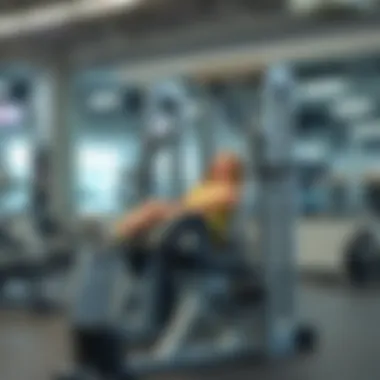
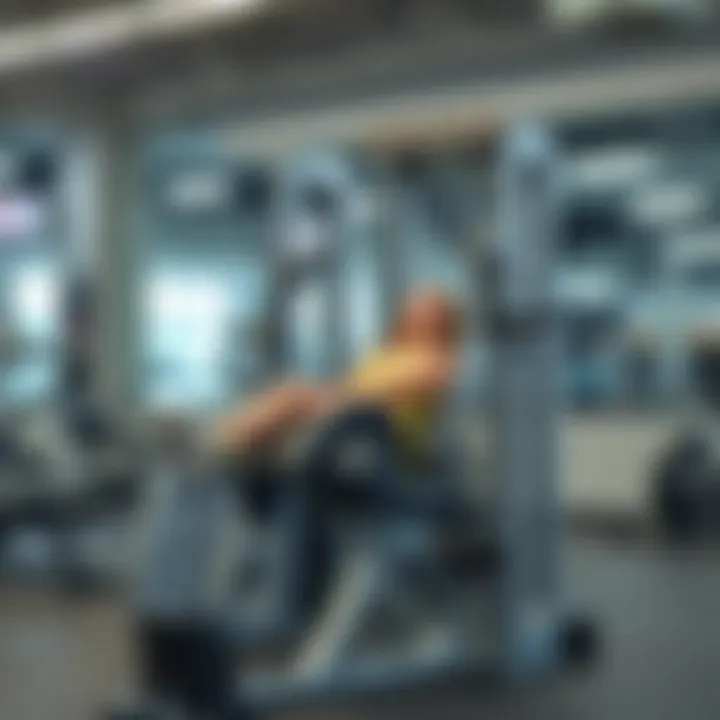
Seated Leg Press
The seated leg press provides an upright or slightly leaned-back position where users push the sled while seated. This machine combines the benefits of leg press movements with additional back support, making it a great option for individuals with back sensitivity or those who find difficulty balancing during leg workouts.
Key Feature: The seating provides excellent support, alleviating pressure on the lower back.
Advantages: Because of its design, the seated leg press allows for variations that target specific muscles more effectively. This makes it a valuable addition to any leg workout routine since users can modify foot placement to focus on different muscles.
"Understanding the different types of leg press machines can greatly enhance your workout routine by allowing focused muscle engagement and safety across levels of fitness."
Benefits of Using the Weight Leg Press Machine
The weight leg press machine is much more than just a piece of equipment you see at your local gym. It provides numerous benefits that cater to individuals across various fitness levels, from beginners to seasoned athletes. Understanding these advantages is crucial for anyone looking to enhance their lower body strength and overall fitness.
Building Lower Body Strength
One of the primary benefits of using the weight leg press machine is its ability to build lower body strength effectively. By allowing users to push significant weights using their legs, this machine activates major muscle groups including the quadriceps, hamstrings, and gluteus maximus. Each repetition helps in increasing muscular endurance and strength, pushing the limits of what one's legs can achieve.
For instance, a consistent leg press routine can significantly improve your performance in daily activities, whether it's climbing stairs or simply walking. Instead of relying solely on bodyweight exercises, the leg press provides an added resistance that effectively challenges the muscles, encouraging them to adapt and grow stronger.
Moreover, those who may have physical limitations or injuries can benefit from the leg press machine’s controlled environment, allowing them to strengthen their legs with reduced risk of injury. This approach enables rehabilitation and strength-building without straining the joints excessively.
Improving Muscle Hypertrophy
Another vital aspect of the weight leg press machine is its role in enhancing muscle hypertrophy, which refers to the increase in muscle size that athletes and fitness enthusiasts strive for. The machine supports a variety of set and rep schemes that target different muscle fibers, making it optimal for growth.
In contrast to free weights, the guided nature of the machine allows for targeted muscle engagement. When combined with an appropriate diet rich in protein, the leg press can be a game-changer for those looking to see tangible changes in muscle mass. By adjusting the weight and employing techniques like drop sets or supersets, users can push their muscles to the limit, signaling the body to synthesize new muscle tissue.
Powerlifters, bodybuilders, and anyone interested in visible muscle gains should seriously consider incorporating leg presses into their regimen. This dynamic exercise not only leads to an impressive physique but also bolsters performance in other leg-based activities, as the muscles become more robust and resilient.
Enhancing Joint Stability
The leg press machine also aids in improving joint stability, particularly in the knees and hips. Unlike exercises that require a balancing act, the leg press allows users to stabilize their body while focusing on strengthening their lower body. This can lead to improved joint functionality and a decreased chance of injury over time.
By effectively training the supporting muscles and stabilizers around the joints, individuals may experience enhanced performance not only in the gym but in sports and recreational activities as well. For instance, athletes involved in running, soccer, or basketball can utilize the leg press to fortify their joints, supporting better agility and coordination.
Furthermore, a stable base can translate into better mechanics during other workouts. Improved joint stability can make it easier to perform exercises like squatting or lunging with proper form, reducing the risk of injury and maximizing effectiveness.
"Incorporating the weight leg press machine into your regimen is like laying down a solid foundation; it supports all other training efforts."
Comparative Analysis with Other Leg Exercises
In this section, we delve into the comparative efficacy of the weight leg press machine in relation to other popular lower body exercises. Understanding how the leg press stacks up against squats, lunges, and deadlifts is crucial for anyone looking to maximize their workout routines. Each exercise has its own set of strengths and weaknesses, and knowing these helps in making informed decisions for training goals. The leg press, while beneficial, may not be a complete substitute for other movements, and this nuance deserves attention.
Squats vs. Leg Press
When comparing squats and the leg press, it's essential to note the fundamental mechanics involved in each. Squats are a compound movement engaging multiple joints, including the hips, knees, and ankles, offering a holistic approach to leg strength. They activate the core and require balance and coordination, which enhances overall functional fitness.
On the flip side, the leg press is a more isolated movement focused primarily on the quadriceps, hamstrings, and glutes. It mimics the motion of squatting but provides back support, reducing the risk of injury for those who might struggle with proper squat form. This makes it a favorable option for beginners or individuals recovering from injuries. However, one could argue that the proprioceptive benefits seen from squats can't be replicated with the press machine, as it limits the range of muscle recruitment.
"Both squats and leg presses have their rightful place in fitness regimens; the key is knowing when to use each to complement your training."
Lunges vs. Leg Press
Next, we consider lunges as a counterpart to the leg press. Lunges offer dynamic movement that promotes balance, coordination, and stability. Each lunge variation can target different muscle groups, including the glutes, quadriceps, and even the hip flexors, making it a versatile choice in workout routines.
Contrasted with the leg press, lunges engage the stabilizing muscles more intensively, contributing to core strength and functional performance. The engagement needed during lunges can lead to improvements in athletic performance and everyday tasks. However, the leg press is easier to manage when it comes to heavy lifting without straining the lower back, as it requires less stabilization.
Deadlifts vs. Leg Press
Finally, a look at deadlifts unveils an entirely different beast—this exercise calls upon the entire posterior chain, focusing primarily on the glutes, hamstrings, and spinal erectors. Deadlifting not only develops leg strength but also benefits grip strength and overall stability. It demands skill, precision, and good form to prevent injuries, potentially limiting its accessibility to novices.
In comparison, the leg press allows for greater weight loads to be handled without increasing the chance of form degradation, suited for individuals looking to push their limits safely. However, while deadlifts can provide superior functional benefits, the leg press can serve as a viable alternative for isolating leg muscles during high-volume sets.
Proper Use of the Weight Leg Press Machine
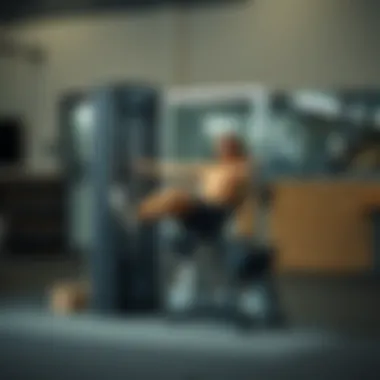
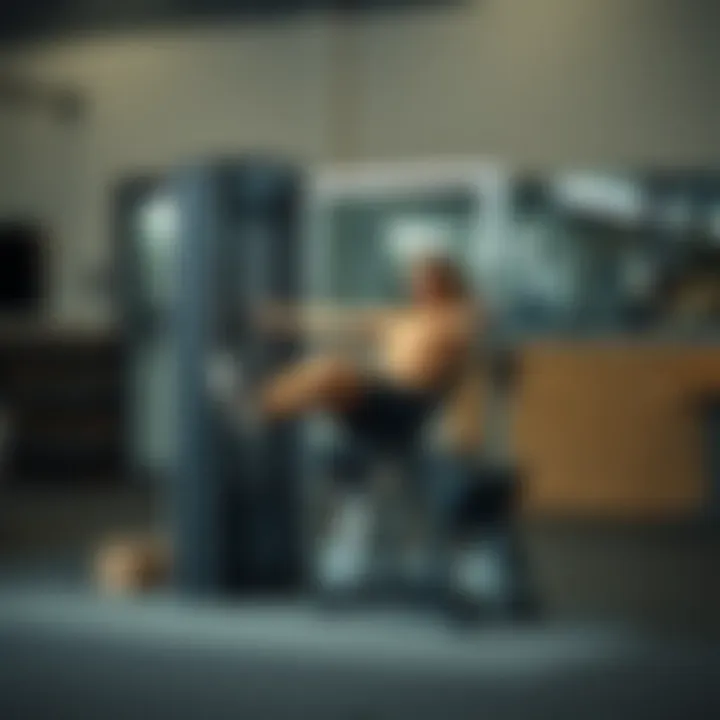
When it comes to the leg press machine, using it properly can make all the difference in achieving fitness goals. Proper use not only maximizes the effectiveness of the exercise but also ensures safety and reduces the risk of injury. Understanding how to set up the machine, the right foot placement, and the recommended repetitions can significantly improve one's workout experience and outcomes.
Setting Up the Machine Correctly
Getting your leg press machine properly set up is akin to tuning a fine string instrument; if it's off just a bit, the performance won't deliver the desired results. First, adjust the seat so that your back is comfortably supported and your knees are aligned with the footplate. Most machines come with meters and guides to help you measure this, but trust your instincts too. If it feels awkward, it probably is. Position the weight stacks according to your current strength level; it’s wise to start light, especially if you’re a novice. Remember, the objective is to build strength over time without straining yourself.
Ideal Foot Placement and Posture
Foot placement on the leg press can feel a bit more like placing the king on the chessboard than just a simple action. The width of your stance and where your feet sit on the footplate can alter muscle recruitment significantly. Generally, a shoulder-width position with feet slightly turned out is a good start. This position targets the quadriceps, hamstrings, and glutes effectively.
However, let’s not beat around the bush; if you feel your lower back lifting off the pad or your knees caving in while pressing, it's a red flag. Your back should remain firmly against the pad, and every effort should engage the lower body rather than your lower back. Also, don’t forget to breathe. Exhale when you push the weight and inhale while returning to starting position.
Repetition and Sets Recommendations
Repetitions and sets can sometimes confuse the heck out of new gym-goers. It essentially boils down to your goals.
- For Strength Building: Aim for three to five sets of five to eight repetitions at heavier weights. Here, the focus is on maximal effort and muscular tension.
- For Hypertrophy: Vary your approach with three to four sets of eight to twelve repetitions. This range will promote muscle growth effectively, engaging different fibers.
- For Endurance: If your goal is to build stamina, consider lighter weights and higher repetitions; this might mean three to four sets of twelve to fifteen or even more.
In all scenarios, proper form should take precedence. If you can't complete your reps with correct posture, it is better to lower the weight. Always listen to your body and adjust accordingly.
In summary, the key aspects of proper use are amplifying effectiveness while prioritizing safety.
Integrating these techniques ensures that your leg press workouts are both fruitful and enjoyable, contributing immensely to your overall fitness journey.
For more detailed tips on personal training and proper exercise techniques, visit sites like Wikipedia and Britannica for dependable information.
Common Mistakes to Avoid
In the pursuit of leg strength, many enthusiasts turn to the weight leg press machine. However, it is all too easy to fall into certain traps that may undermine effectiveness or lead to injury. Understanding and acknowledging common mistakes associated with the use of this machine is crucial. Avoiding these pitfalls not only enhances workout efficiency but also maintains one’s safety—a priority no matter your fitness level. Here, we delve into key errors that users often make, focusing on form, weight limits, and the importance of warm-up and cool-down routines.
Incorrect Form and Posture
Using the leg press machine doesn’t come without its challenges, particularly when it comes to maintaining proper form. Picture this: You sit down, adjust the weight, and begin your press. But if your back is hunched or your knees extend too far past your toes, it’s like trying to drive with one foot on the gas and the other on the brakes.
- Knee Alignment: One of the most common mistakes is allowing the knees to buckle inward or outward. This misalignment can put undue stress on the joints and lead to injuries over time. Keep those knees in line with your feet, as if they were on a straight path.
- Back Positioning: Another issue is the back. Whether it’s arching too much or flattening against the pad, both extremes compromise safety. A neutral spine is your best friend here. Make sure the back remains pressed against the seat to support your lifting stance.
To get it right:
- Adjust the seat properly to fit your height.
- Take a moment to check your position before starting your reps.
Doing so will give you a strong foundation for effective training.
Ignoring Appropriate Weight Limits
Another frequent slip is going overboard on the weights. Sure, it might feel good to stack on the plates and feel as powerful as an ox; however, this enthusiasm often backfires. Lifting weights that exceed your ability can impede progress, rather than promote it.
Think of it like this—if you dive in the deep end without learning to swim, you’re likely to get in over your head.
- Start Slow: Beginners should focus on lighter weights to master the technique first. Progression should come gradually; it’s not a rush to the finish line.
- Listen to Your Body: Pay attention to the signals your body sends. Pain might be a red flag that you’re lifting too much.
Ultimately, respecting your limits can yield longer-term gains without the risk of injury. After all, the goal is not just to lift but to lift safely.
Neglecting Warm-Ups and Cool-Downs
Ah, the warm-up and cool-down—the often overlooked steps in a workout routine. People often hop onto the leg press machine, eager to dive straight into their sets, completely disregarding what comes before and after. It’s like heading into a winter storm without a coat—taking unnecessary risks. Warm-ups elevate heart rates and prepare muscles for exertion, while cool-downs help return the body to a resting state.
- Dynamic Warm-Ups: Try incorporating light cardio or dynamic stretching before you dive deep into those leg presses. This could involve movements like leg swings or gentle lunges to prep your muscles and joints, making them more responsive to exertion.
- Static Stretching Post-Workout: After your workout, dedicate time to static stretching. Targeting the hamstrings, quadriceps, and calves can alleviate tightness and promote better flexibility over time.
In summary, failing to incorporate these elements might not only hinder performance but could lead to increased muscle soreness and even injury in the long haul.
"An ounce of prevention is worth a pound of cure."
By keeping these common mistakes in mind, utilizing the leg press machine can be a safe and highly effective way to boost your lower body strength and achieve better results in your fitness journey.
Potential Risks Associated with Leg Press Usage
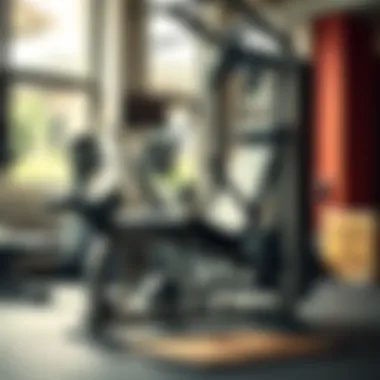
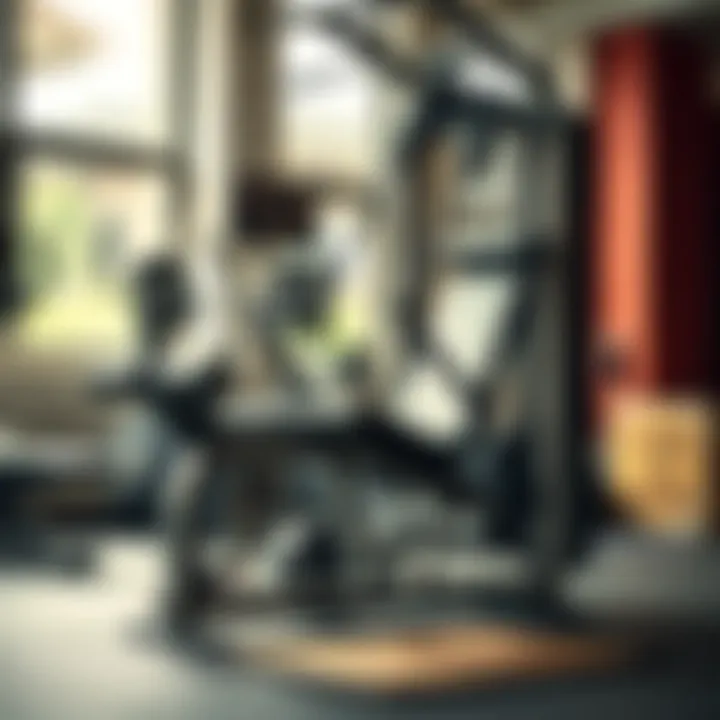
When incorporating the weight leg press machine into a fitness regimen, it's vital to acknowledge the potential risks it entails. Knowing the risks not only enables users to make informed decisions about their workouts but also emphasizes the importance of proper form and technique. While the leg press can be a powerful tool for building strength, improper utilization can lead to serious injuries. Understanding these risks can prevent setbacks and ensure a safe and productive workout experience.
Identifying Symptoms of Injury
Awareness of injury symptoms is essential for anyone incorporating the leg press into their routine. Many injuries may not manifest immediately, making it critical to recognize signs as early as possible. Common symptoms include:
- Sharp Pain: Any sudden, severe pain during or after the exercise could indicate muscle strain or injury.
- Persistent Discomfort: If pain lingers beyond a post-workout soreness, it might suggest an underlying issue.
- Swelling: Visible swelling around the knees, ankles, or lower back after performing leg press could point to significant injury.
- Reduced Range of Motion: Difficulty moving your legs or an uncomfortable tightness can be an indicator of overuse or acute injury.
“Listening to your body is key. Ignoring small pains often leads to larger problems.”
Monitoring for these symptoms becomes imperative, especially for those pushing their limits or experiencing fatigue. Ignoring warning signs can lead to chronic issues that could sideline a fitness journey significantly.
Preventive Measures to Consider
To minimize the risk of injuries while using the leg press machine, several precautions can be implemented. Here are common preventive measures:
- Proper Warm-Up: Engage in a brief warm-up before pressing weights. Activities like brisk walking or dynamic stretches can prepare your muscles adequately.
- Focus on Form: Always ensure that the back remains pressed against the pad and the knees do not extend beyond the toes. This position helps reduce undue stress on the joints.
- Start Light: Particularly for beginners, beginning with a lighter weight is wise. Gradually increasing resistance as strength develops can prevent injury and allow for muscle adaptation.
- Adjust the Machine: Ensure that the seat and footplate are correctly adjusted to fit your body. Incorrect positioning can lead to poor biomechanics and increase the chance of injury.
- Rest and Recovery: Incorporate rest days into your workout routine. Muscles need recovery time to repair and strengthen, preventing overtraining.
Incorporating these preventive measures not only safeguards the joint and muscle health but also enriches the overall exercise experience. By fostering a smart approach to usage, you enhance the benefits while mitigating potential harms, enabling sustainable progress in your fitness journey.
Fitness professionals should encourage individuals to listen to their bodies, prioritize technique, and utilize proper preventive strategies. This ensures a balanced approach to leg training, yielding both strength benefits and a lower injury risk.
Integrating the Leg Press into a Workout Routine
Integrating the leg press into a workout routine serves as a cornerstone for those looking to achieve a well-rounded approach to lower body fitness. Rather than treating this machine as merely another piece of equipment, understanding its role in a comprehensive training program can yield significant benefits. Here’s a deeper look into how you might effectively incorporate this machine into your regimen.
Creating a Balanced Leg Workout
A balanced leg workout should encompass all major muscle groups in the lower body, including quads, hamstrings, glutes, and calves. The weight leg press machine can help target these areas distinctly, yet the best results come from ensuring variety in exercises. Here’s how to craft that balance:
- Compound Movements: Combine leg press exercises with other compound movements. Squats and deadlifts can complement the leg press well, engaging multiple muscles and promoting overall strength.
- Isolation Exercises: Incorporate calf raises or leg extensions to isolate specific muscles, providing a well-rounded approach to muscle development. Doing this helps stimulate muscle growth and contributes to joint stability.
- Flexibility Work: Never underestimate the power of flexibility training. Adding stretching or yoga sessions can improve your range of motion, crucial for maintaining proper form while using the leg press.
A sample workout might look like this:
- Warm-Up: 10-minute bike ride or light jogging
- Leg Press: 3 sets of 10-12 reps
- Squats: 3 sets of 8-10 reps
- Leg Curl: 3 sets of 10-12 reps
- Calf Raise: 3 sets of 12-15 reps
- Stretching: Focus on lower body for about 10 minutes
This mix provides not just muscle balance but also aligns strength gains with functional movement – crucial for daily activities.
Periodization and Progression Strategies
Progress is vital in any training routine, and the leg press is no exception. Implementing periodization helps in managing intensity and volume to prevent plateaus and overtraining. Here are a few strategies to consider:
- Linear Progression: Gradually increase weights on the leg press over set periods, perhaps every few weeks. This ensures muscles are continually challenged.
- Undulating Periodization: Change rep schemes and weights more frequently throughout the week. For example, one day you might focus on heavy sets for strength, while another day could emphasize lighter weights with higher reps for endurance.
- Deload Weeks: Build rest and light training weeks into your program to allow your muscles to recover. This is crucial to maintaining long-term gains without injury.
To effectively track your progress, consider keeping a workout journal or using apps designed for fitness tracking. Documenting your workouts not only helps keep your goals in sight but also allows for adjustments based on observed gains or setbacks.
“Consistency is key, but smart adjustments keep the journey exciting.”
Adopting these strategies will ensure that the leg press adds measurable value to your fitness routine while minimizing the risk of burnout or injury. Keeping workouts varied and planned will maintain both physical and mental engagement in the fitness journey.
Summary and The End
The weight leg press machine is more than just a piece of gym equipment; it plays a crucial role in the strength training landscape. This machine allows users of varying fitness levels to target their lower body effectively, making it a staple in many workout regimens. By understanding the nuances of its function and application, individuals can optimize their workouts and achieve substantial results.
In this article, we discussed the core components of the weight leg press machine, including its design, operation, and specific benefits. It’s not just about pushing weights; it’s about targeting the glutes, quadriceps, hamstrings, and calves. By integrating this machine into a balanced workout routine, one can build muscle, improve hypertrophy, and enhance overall joint stability.
The comparative analysis of leg press with other exercises such as squats, lunges, and deadlifts provided insights into its unique advantages. Each exercise aims at developing lower body strength differently, yet the leg press stands out for its safety and adaptability, especially for novice trainers. This enables users to progressively challenge themselves without jeopardizing their form.
Moreover, our exploration of proper machine usage and common pitfalls highlighted the importance of starting with correct form, understanding weight limits, and prioritizing warm-ups and cool-downs. Failing to adhere to these guidelines could lead to injury or hinder performance, making awareness vital.
Finally, integrating the leg press into a workout regimen with strategic planning around periodization ensures that progress can be maintained over the long haul.
As a fitness enthusiast or a professional, remember that knowledge is key to success in any training program.
Recap of the Key Points
- The weight leg press machine is pivotal for targeting lower body strength effectively.
- Benefits include muscle hypertrophy, joint stability enhancement, and safety compared to other exercises.
- Proper setup and form are essential to ensure effectiveness and prevent injury.
- Integration of leg press into comprehensive workout strategies promotes long-term progress and adaptation.
Final Thoughts on Leg Press Training
In wrapping up our discussion, it's clear that the weight leg press is not a one-size-fits-all solution, but it certainly offers expansive benefits when used correctly. Trainers and fitness enthusiasts alike should embrace its versatility. When combined harmoniously within a full training regimen, it can lead to significant advancements in physical capabilities. For those working with clients, educating them on both the potentials and pitfalls of this exercise can yield excellent results.
Additionally, having an ongoing dialogue with peers and fitness communities, such as those found on reddit.com/r/fitness or facebook.com/groups/fitness, can also fortify your practices. Ultimately, understanding each mechanism of this machine can empower users to take charge of their fitness journeys effectively.



